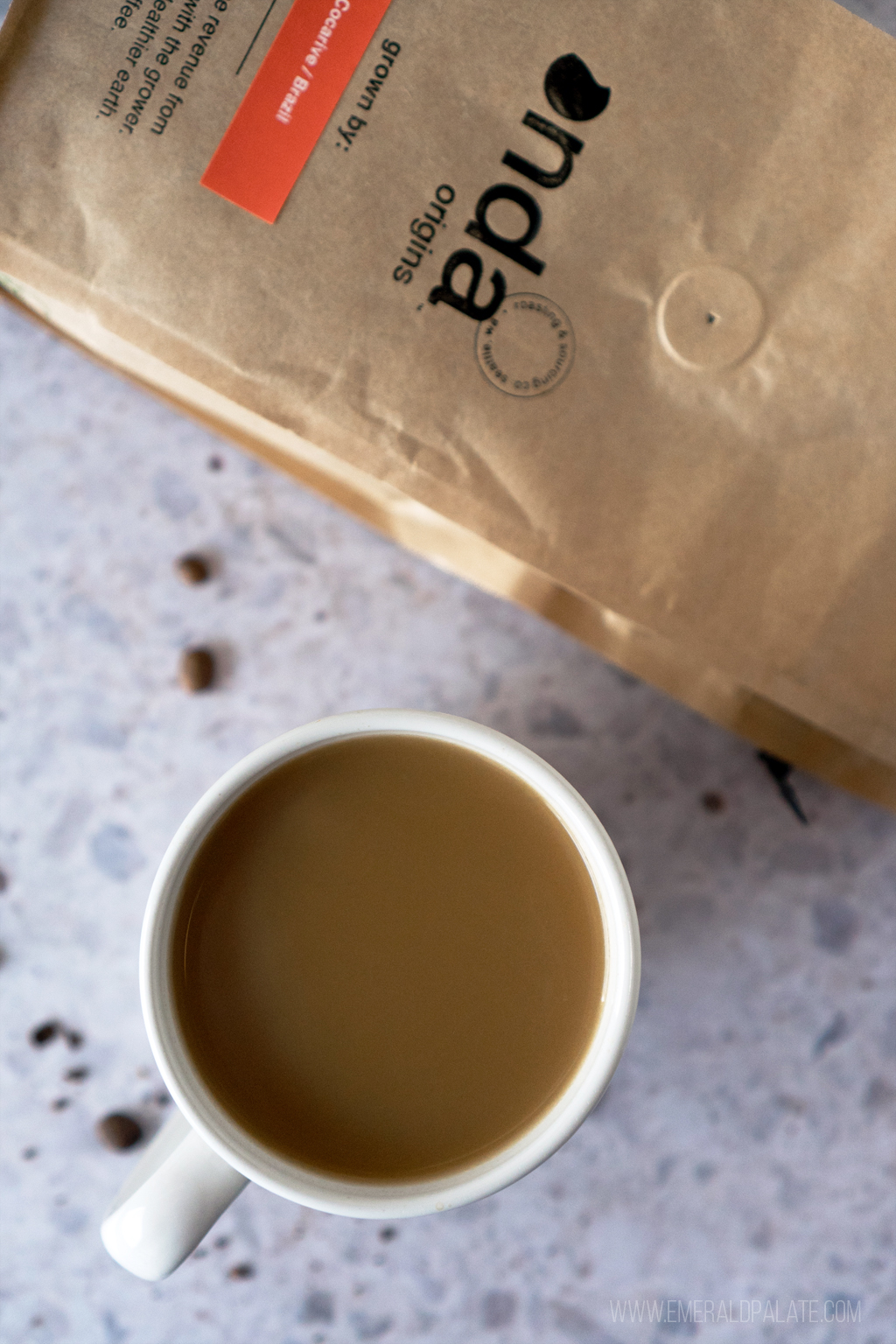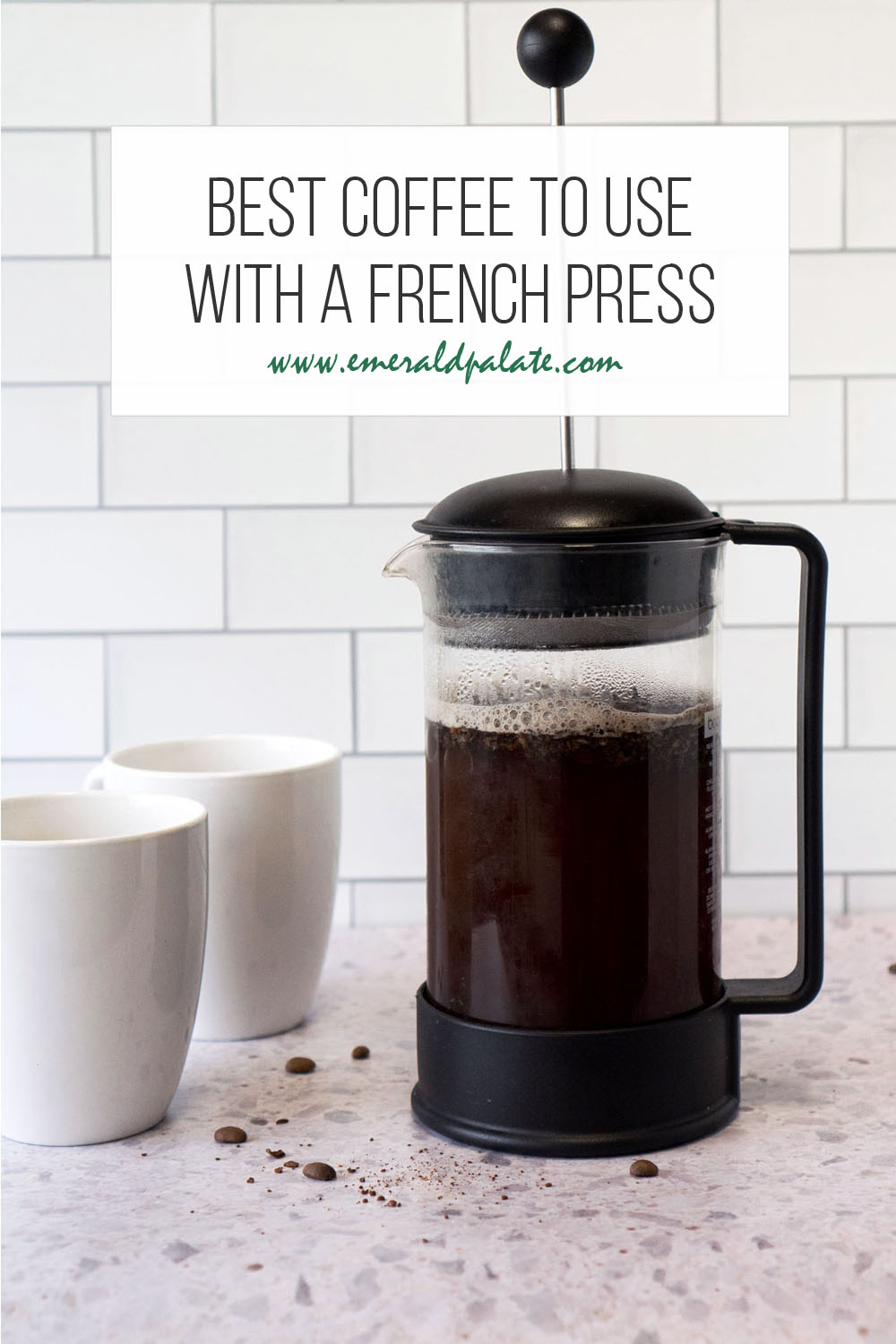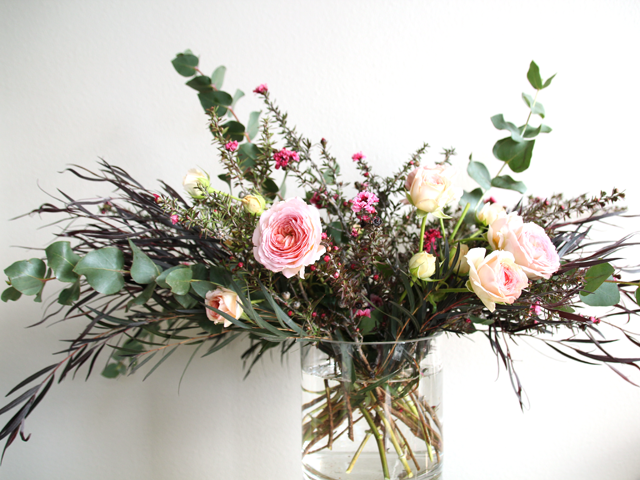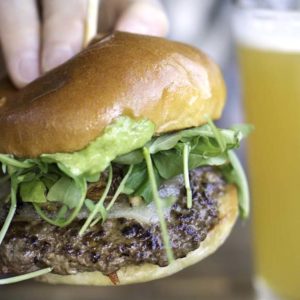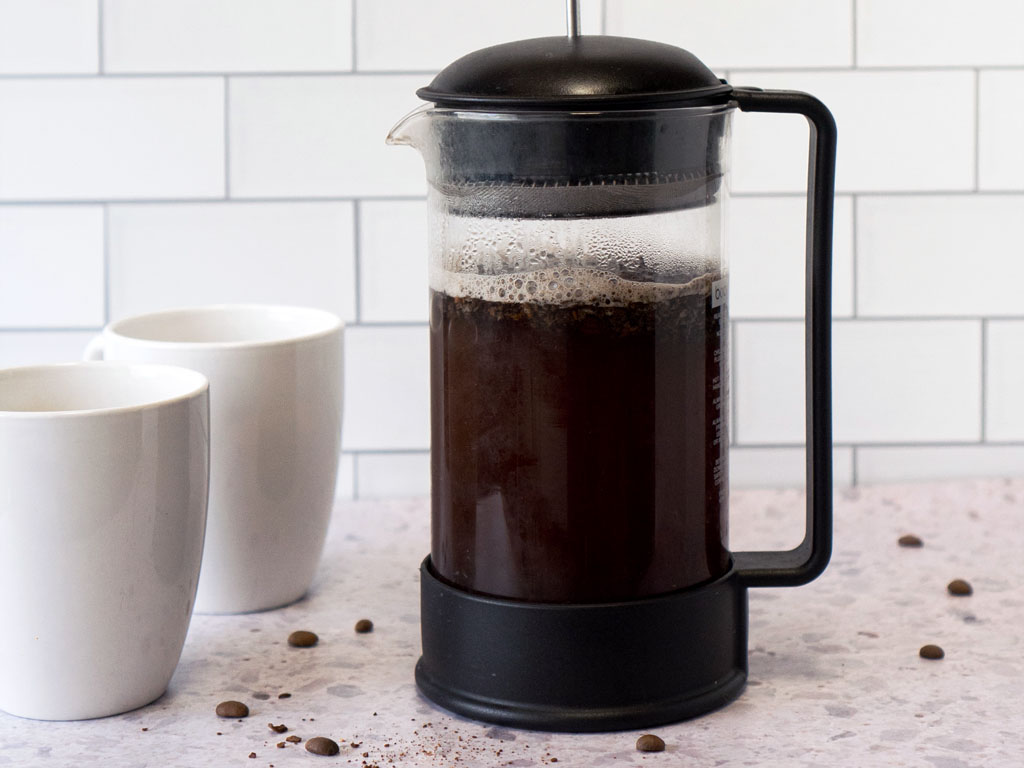
I’ve used a French press for over a decade, so I’m always on the lookout for the best coffee for French press. In fact, using a French press was the first coffee brewing method I ever learned! I didn’t know how to use a regular drip machine until about 5 years ago.
Given my experience with this brew method, I’ve tried to French press a lot of different coffees. Some were awesome, others were meh, and a few were gross. But through a combination of perfecting my French press brew technique and learning how to find the best coffee for French press, I haven’t made a bad cup of French press coffee in a very long time.
To help understand why that is, I talked to the co-founder of Seattle-based Onda Origins Coffee to learn how to choose the best coffee for French press and brew the perfect cup. Even though I consider myself somewhat of a French press expert, I still learned new techniques from chatting with him. So whether you’re a French press beginner or advanced brewer, get ready to learn something in this info-packed guide to buying the best coffee for French press.
This article is sponsored by Onda Origins, a Seattle-based coffee company that works directly with young farmers so they can pay them fair wages. As always, all opinions are my own. Thanks for supporting the brands that keep The Emerald Palate running!
Best Coffee for French Press
If you’re just looking for the best French press coffee to buy, here are 3 options from Onda Origins, one of my favorite small-batch coffee roasters:
- Cocarive – This is a lighter medium roast from a farm cooperative out of Brazil. It’s nutty and super drinkable, sort of like an everyday breakfast coffee because it doesn’t have intense flavor profiles like other roasts.
- Ivonne Herrera – This is a medium roast featuring single-origin beans grown by a woman-owned farm in Guatemala. It has milk chocolate notes and a bit of fruitiness similar to a holiday candy with a bit of fruit liqueur in it.
- Neo Noir – This is the darkest of these three medium roasts and features beans from Ivonne Herrera and a few other farms. It’s smoky and bold, but not over roasted so it’s still relatively sweet with a strong nutty flavor.
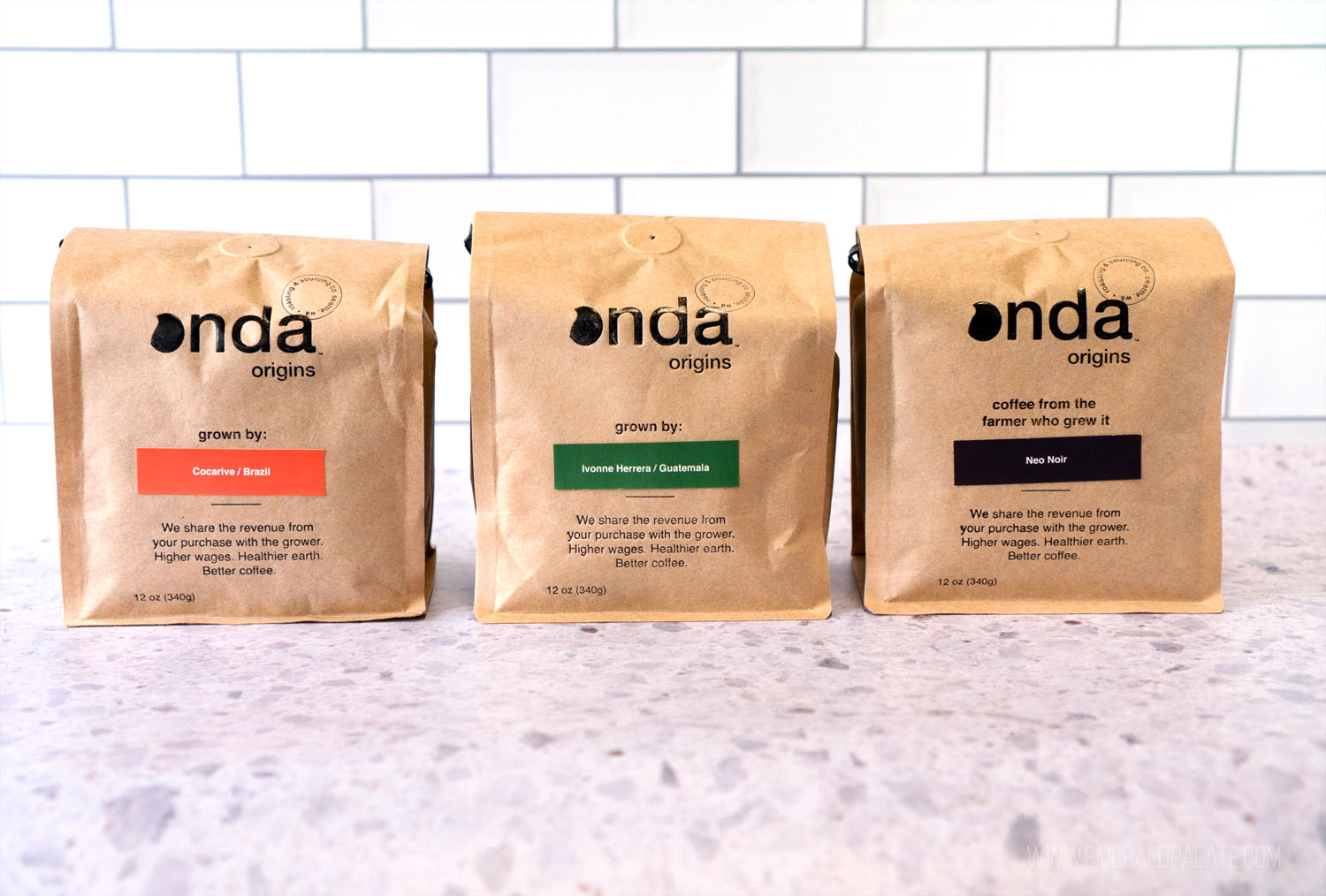
If you’re curious about Onda Origins and why I love them, they’re a Seattle coffee roaster I first discovered at a Seattle holiday market. They work directly with young farmers and pay them directly with traceable blockchain technology to ensure they make a living wage.
To put it in perspective, Onda helped Ivonne Herrera double her income since they started working together. For every bag you purchase, Onda tells you on the receipt exactly how much of your purchase went back to the farmer.
So when Onda Origins reached out to me about working together, I was stoked because I had already included them in my article on the best coffee roasters in Seattle and constantly have their coffee beans on hand.
I interviewed co-founder Scott Tupper to understand how to choose the best coffee for a French press. If you’re interested in learning why some beans taste better with a French press than others and how to go about finding the perfect bag, read on!
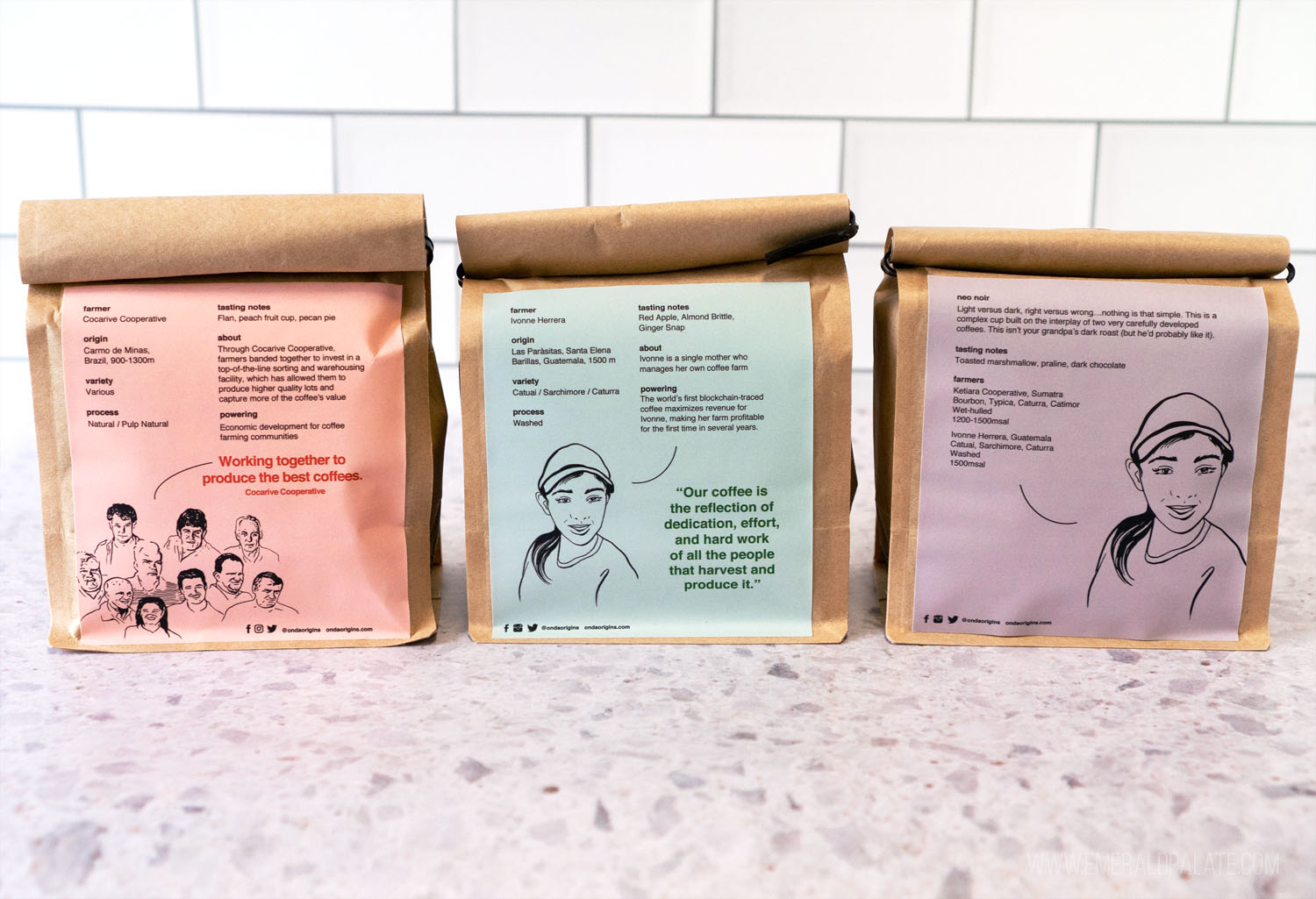
Choosing the best coffee beans for French press
Yes, beans. While you can obviously use ground coffee for the French press brewing method, starting with whole bean coffee and grinding it right before you make your coffee is best. That’s because oxygen is the death of coffee, according to Tupper.
Just like an apple is affected when exposed to oxygen, so too are coffee beans once ground. While they won’t literally turn brown like an apple, coffee beans start the process of going stale once exposed to oxygen. That’s because the oxidation process pulls electrons away from other molecules. The molecules with less electrons become unstable and begin reacting with other molecules around them.
When this happens, you start losing aromas and flavor. So when shopping for coffee, choose whole bean instead of pre-ground.
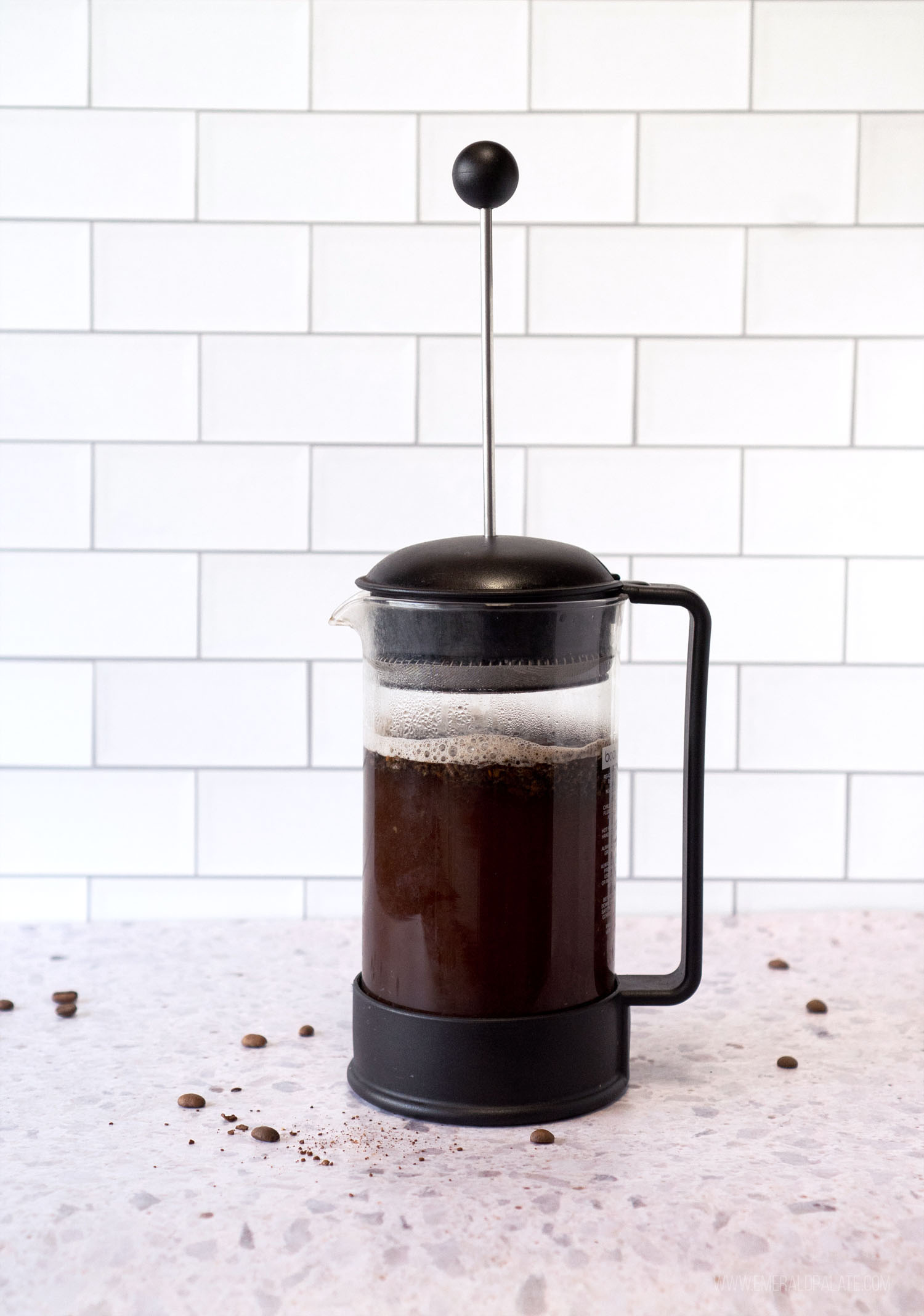
Buy farm-grown whole beans that were roasted recently
You want to buy beans that have been roasted within the past week because oxidation begins after roasting.
Another thing to look for when buying roasted coffee beans is what type of bean is being used. In general you want to look for Arabica beans traceable to farms instead of large coffee cooperatives that mask where they source beans from.
There are two types of coffee beans in the world: Arabica and Robusta. Robusta beans are cheaper because they are pollinated by animals and nature, whereas Arabica beans self pollinate. Because they’re more affordable, Robusta beans are the type coffee companies like Starbucks use. While great coffee can be made with robusta beans, in general Arabica beans yield a higher-quality cup.
Aside from buying whole Arabica coffee beans that have been roasted recently, there isn’t a specific coffee best for French press. That’s because the best coffee bean for French press is based on the drinker’s preference.
Therefore, the key to finding the best coffee for French Press is understanding what style of coffee different brew methods yield and knowing what you like.
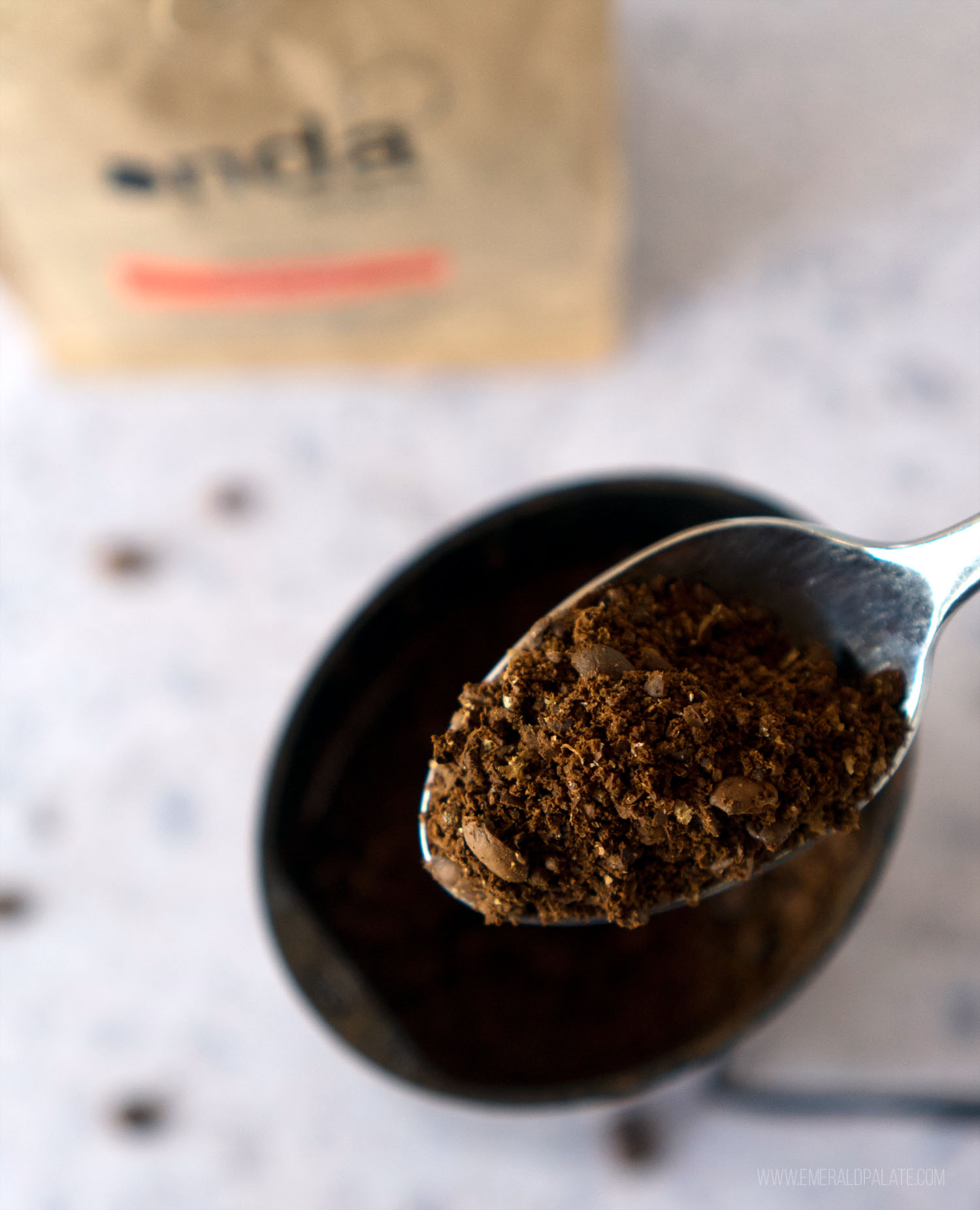
Know the difference between French press and other brew methods
French press is different from other brew methods in two ways: the type of filter it uses and the brew time. The unique combination of these two variables means French press coffee is fuller bodied and brings out the sweet flavor profiles of coffee beans.
Why is that? Let’s first look at how filters play a role.
When it comes to filters, a typical drip coffee machine, Chemex, and aeropress use paper filters. Compounds in the coffee bind to the paper filter and are removed from your cup, resulting in a clean, crisper taste.
“Think of the nicest coffee you’ve had at brunch. That uses a paper filter because it’s built to replicate the same flavor day after day.”
Scott tupper, co-founder of onda origins coffee
A French press coffee maker uses a metal filter instead.
Metal allows the compounds to pass through to your cup, which lets you enjoy the nuances of that coffee. Tupper explained coffee has a greater degree of chemical complexity than wine, so metal filters let you taste notes that can be dulled down by paper filters.
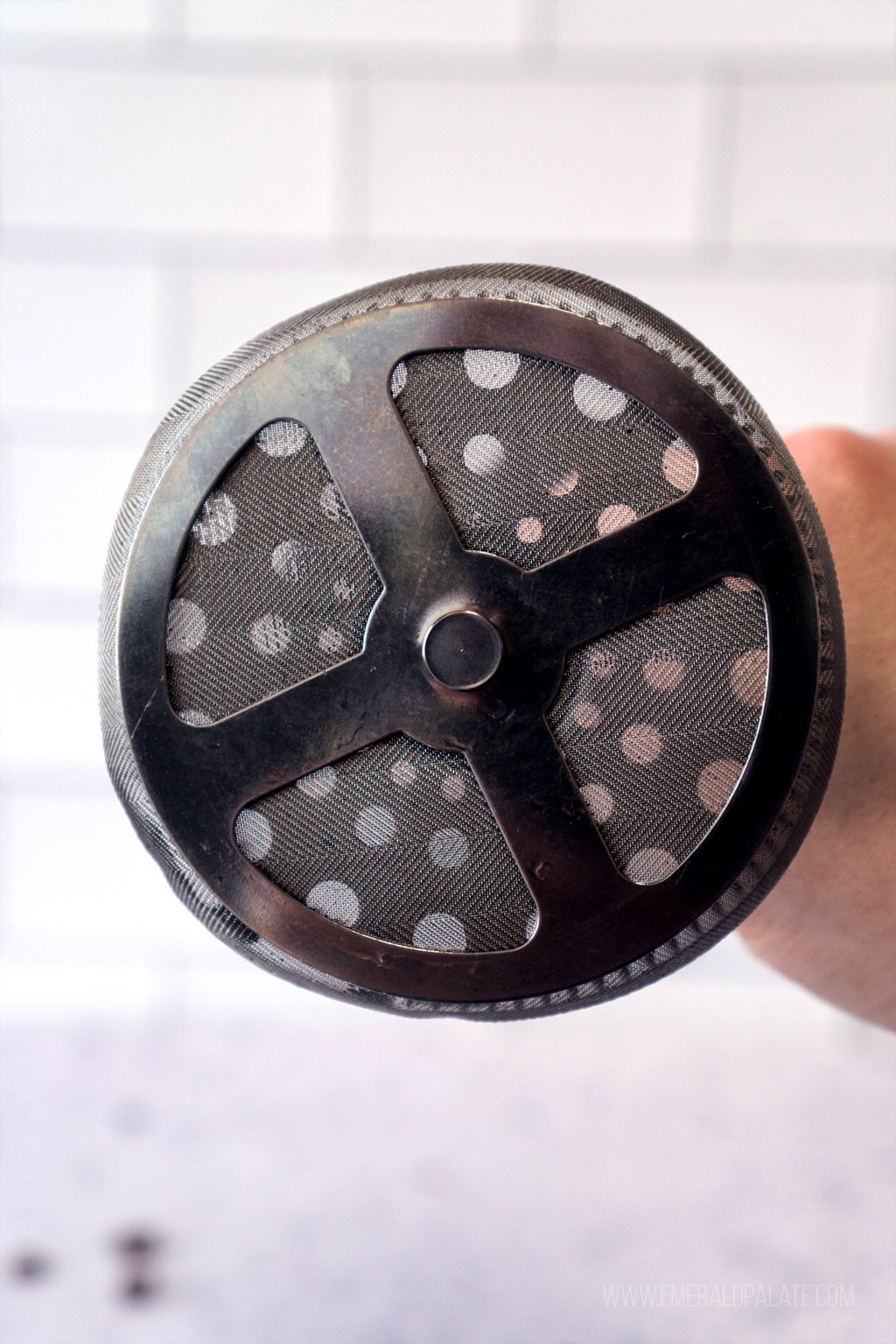
The other variable that makes French press unique is the brewing time. Tupper explained that French press is an immersion brewing method, which means you’re drowning coffee in a closed space with around 200℉ water and not letting anything flow out for about 9 minutes. This longer steep time extracts the sugars from the coffee, which highlights the sweetness in the beans you use.
Fun fact: Espresso is also a metal filter brewing method. However, it results in a very different cup of coffee.
Tupper explains this is because to make espresso you use hotter heat and pressure to reduce the extraction time. Because the beans don’t steep as long, espresso results in a more intense cup of coffee that highlights the tart and floral notes of coffee beans rather than the sweet notes highlighted when using a French press.
Determine what coffee style you prefer
Because of the unique brewing properties mentioned above, French presses create a full bodied, well rounded, and often sweeter cup of coffee. If you prefer this type of coffee, you’ll probably love French press.
The other factor to consider when choosing the best coffee for French press is whether or not you add anything like cream or sugar to your coffee. For example, I use a dash of whole milk in my coffee every morning so French press is a good brewing method for my preferences.
Why? Because, in general, coffees that have chocolatey or earthy flavor profiles taste better with milk than highly acidic or fruit-like flavors. As I’ll talk about more below, coffees with more nutty and chocolate notes are best for French press.
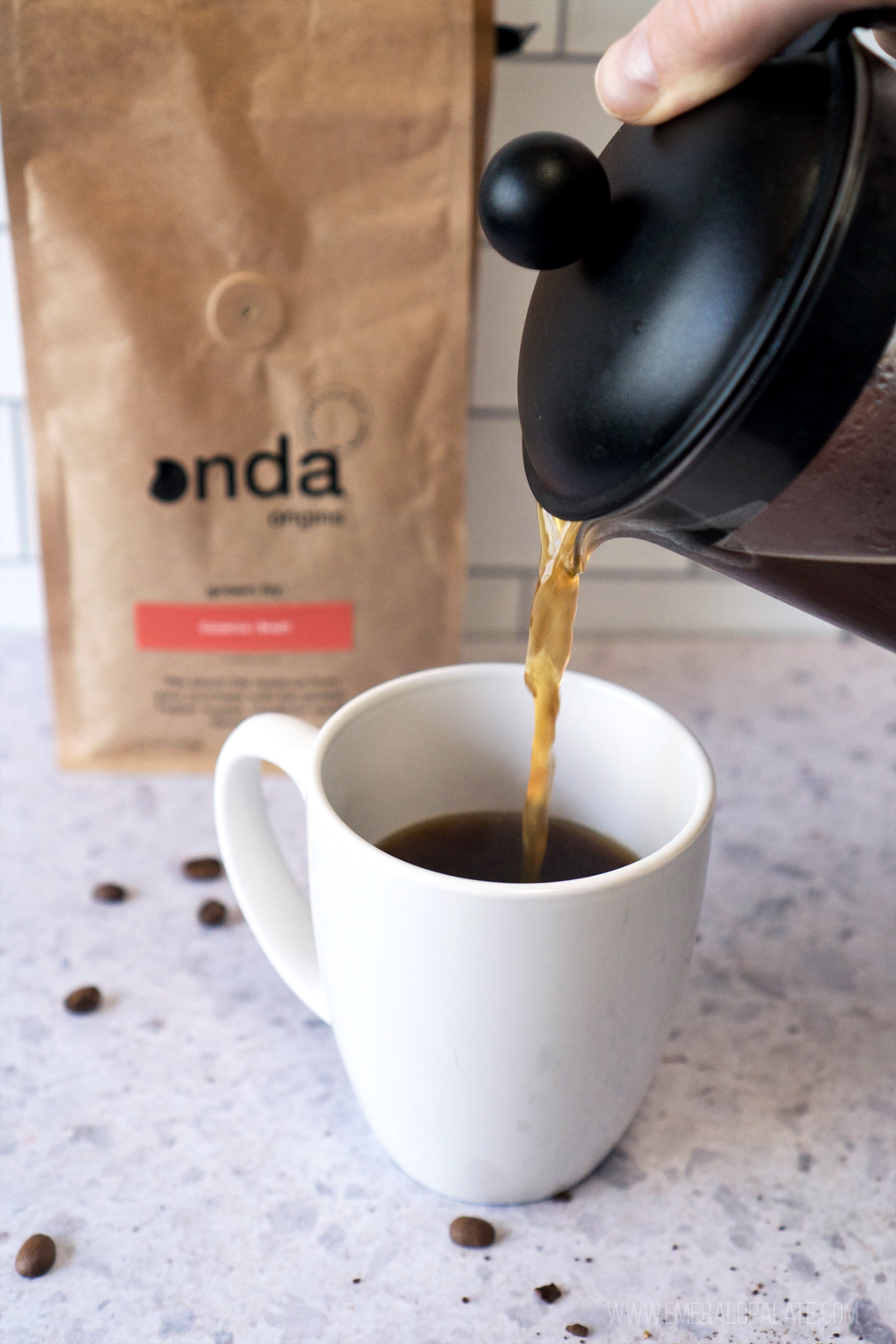
Look at the roast and tasting notes
Since French press makes a fuller bodied coffee, darker roasts can be really bold. So if you don’t like really strong coffee, look for light to medium roasts. For example I find French dark roasts too bitter in a French press, so you never find them in my home.
The other thing to look at when shopping for the best coffee beans for French press are the tasting notes on the bag. Tupper also recommends looking for sweeter and nutty flavors like chocolate or hazelnut. He said that in his experience people who like French press coffee tend to steer toward these types of notes. He finds that people who like fruitiness tend to like brewing methods that use paper methods so they can experience a crisper cup of coffee and taste the high, fruity notes.
In general, Central American, South American, Indonesian, and Kona coffee tend to have these notes, Tupper explained. So if a coffee shop or website organizes their coffee by region, check out the tasting notes on the bags from these locations.
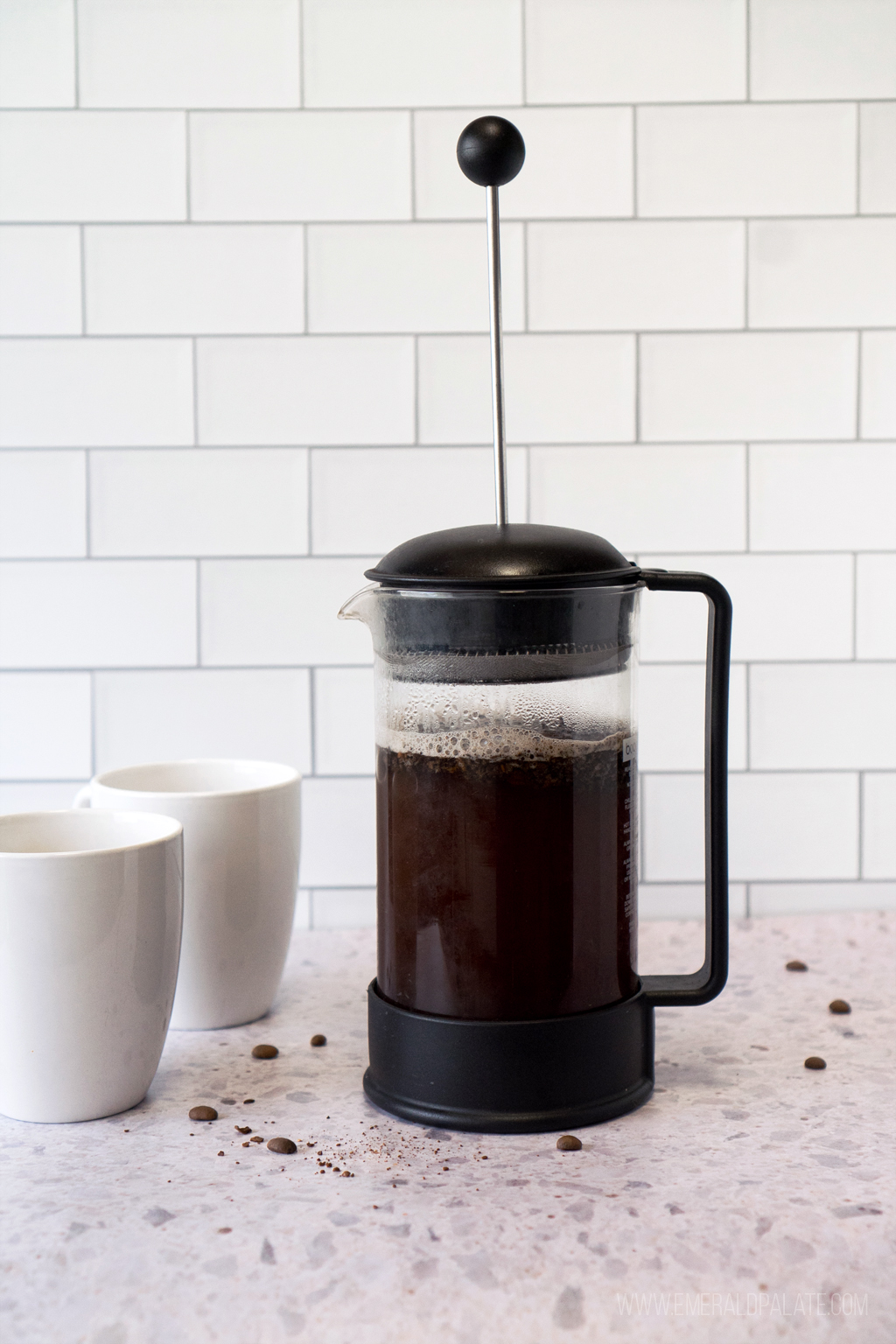
When in doubt, ask the barista
Tupper encourages you to lean on your barista because they taste coffee every single day. In addition, they can usually help you find the best coffee for French press based on your specific palate.
For example, Tupper said that when guests visit Onda Origins Cafe & Roastery in the Hillman City neighborhood of South Seattle, the first thing he asks is what kind of brewing method they use at home. So if they say French press, he’ll steer them toward coffees that are presenting sweeter and nuttier notes.
It’s this kind of expertise that will help you find the best coffee beans for French press without all the work. So if you’re based in Seattle, visit their cafe and speak to a barista to find your perfect bag of coffee to brew with your French press.
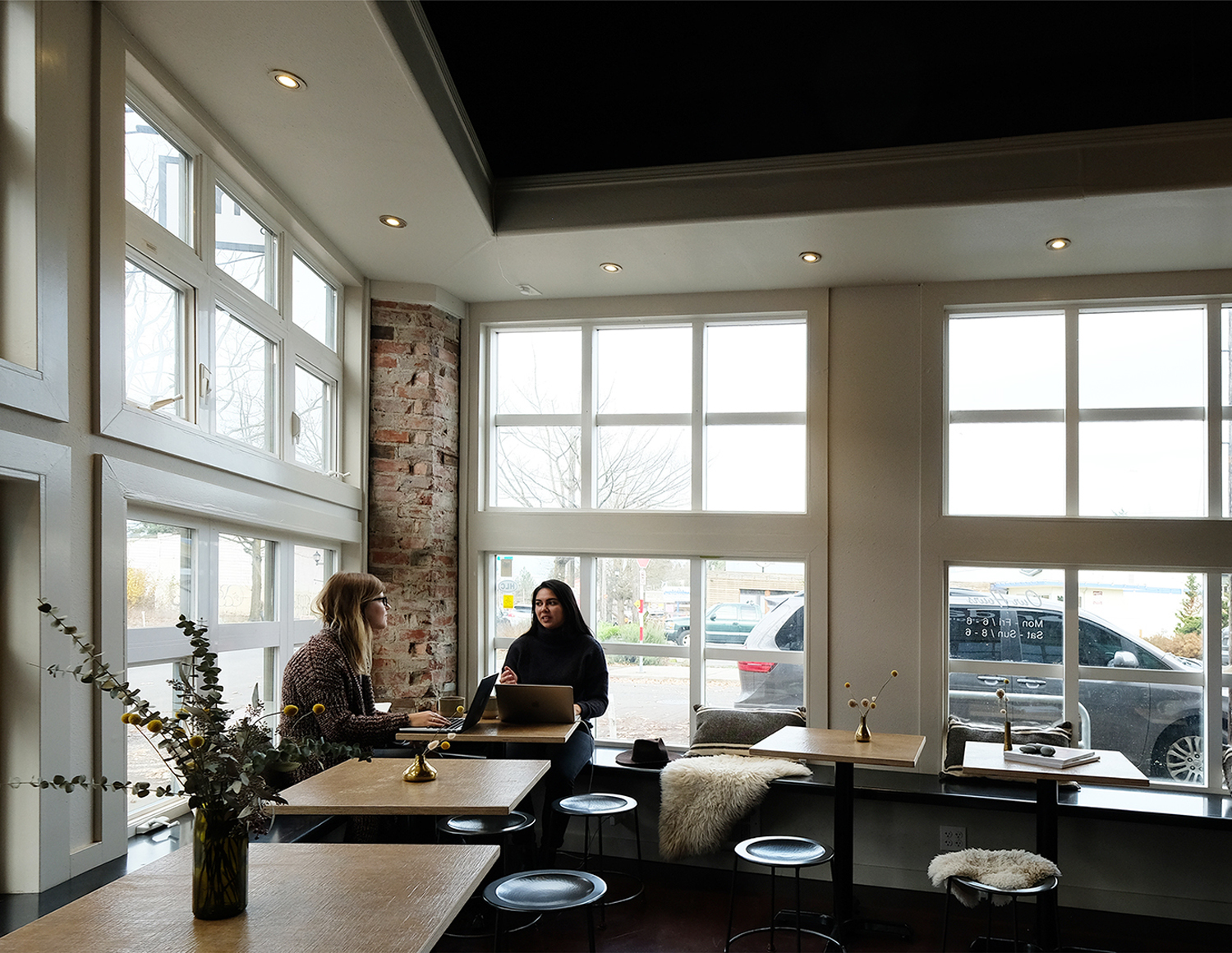
French press brew guide
Once you find the best coffee for French press, how do you brew it to ensure you make the perfect cup? I asked Tupper to spill all his secrets in this French press brew guide.
Tupper explained he uses a simplified version of the James Hoffmann French press method developed by the famous UK-based coffee expert of the same name. Here’s his recommended process.
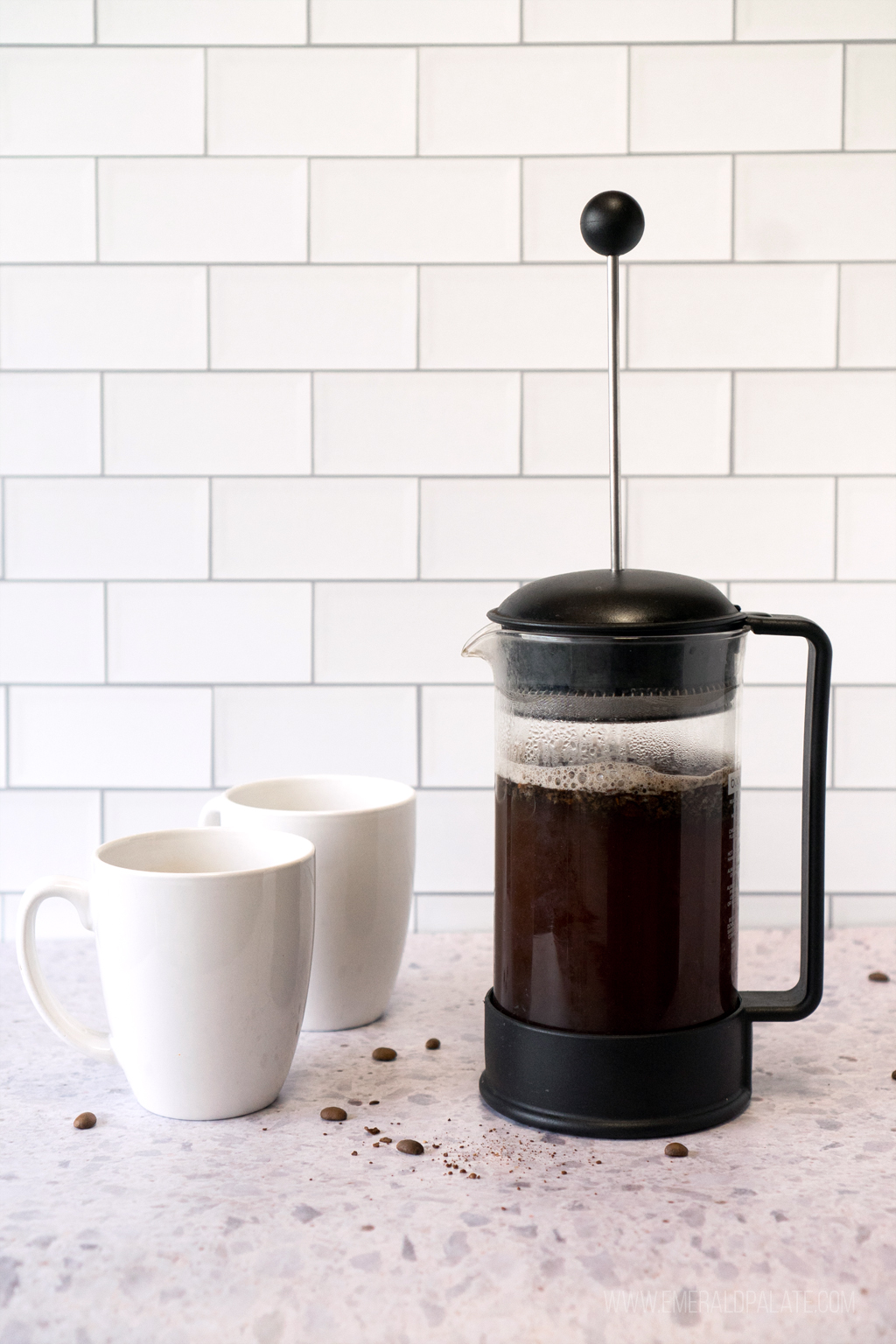
Measure a 1:16 ratio of beans to water
Tupper recommends starting with a 1:16 ratio of beans to water. This means for every ounce of coffee, you want 16 ounces of water.
To put this in perspective, I own a 32 ounce French press which makes just about three 12-ounce cups of brewed coffee. To keep that 1:16 ratio, I add about 2 ounces of coffee to the 32 ounces of water.
However, this 1:16 ratio is just a starting point. You can play with the ratios to create the coffee you prefer. If you prefer a stronger coffee, reduce that ratio to 1:15, 1:14, 1:13, etc. If you prefer milder, go up to 1:17, 1:18, etc. You can also enjoy different ratios depending on the coffee, so play around with these if you buy a new bag and the ratio you always use isn’t creating a cup you like.
Pro tip: One ounce equals 28 grams of coffee, if you prefer to use a scale to measure out your coffee.
Bring your water to a boil
Prepare everything else while your kettle heats up on the stove. Always use cold tap water instead of hot when filling your kettle. While it may be tempting to start with hot water, the water used to make it hot has been sitting in your hot water tank and collecting sediments.
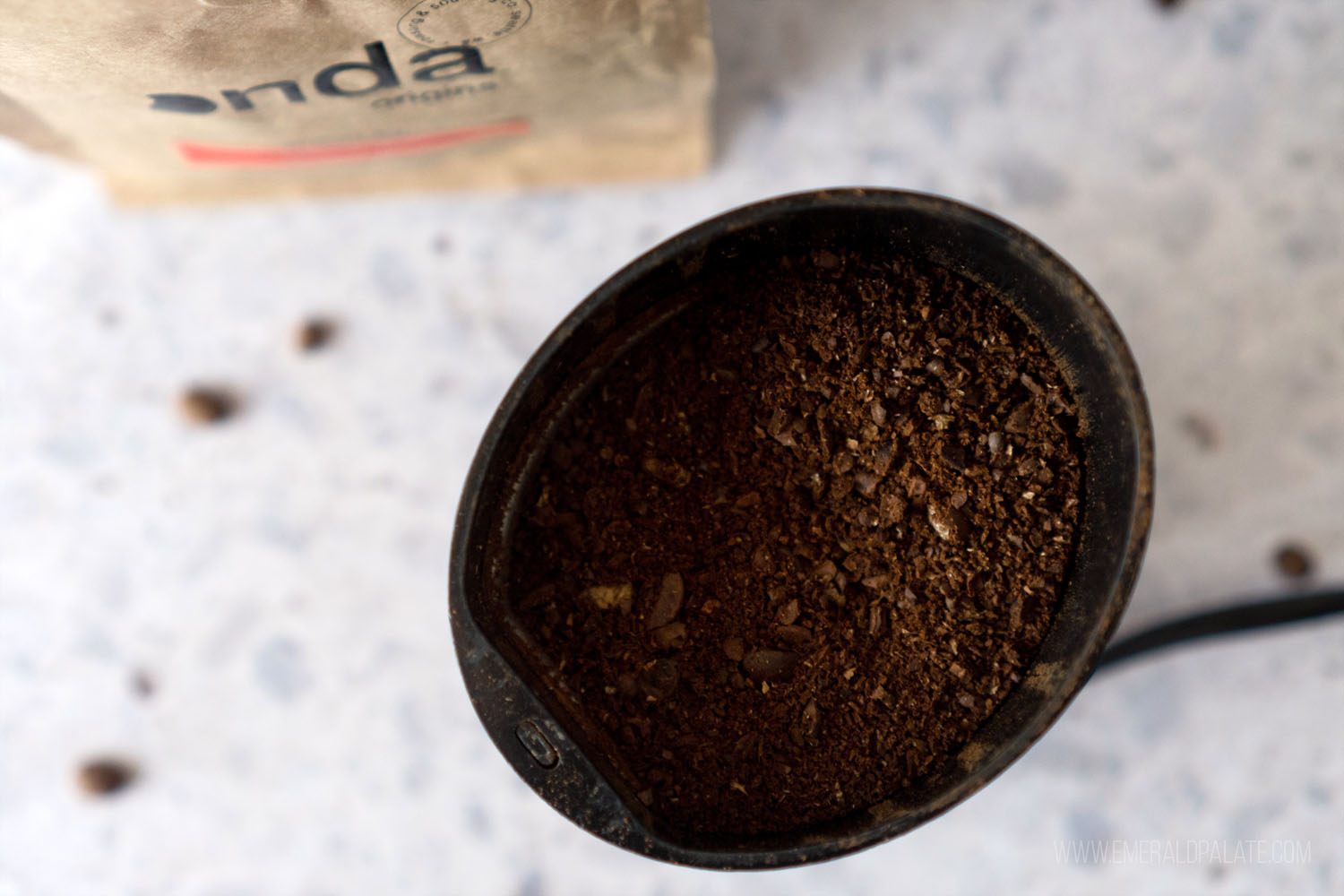
Coarsely grind your coffee
Pulse your beans in an electric grinder a few times to create coarse grinds. I use a cheap Krups electric grinder and grind the beans until it’s the size of coarse kosher salt, but there are burr grinders that let you adjust the grind size settings.
It doesn’t need to be an exact science, but the key is to make sure you don’t get too fine of a grind for French press. That’s because finer grinds can get through the metal filter. No one wants a mouthful of grounds when they take a sip of coffee!
Courser grinds also make it less likely you’ll over steep your coffee and be left with bitter flavors. Remember that the French press brew guide drowns coffee with water in a closed space. This means you need less surface area for the water to soak the coffee grounds.
Tupper recommends trying to time your grinding to about 20 seconds before you’re ready to put the water in. This minimizes the amount of oxygen your beans are exposed to and also maximizes the flavors you’ll experience from your beans.
Rinse your French press with hot water
Putting hot water from the kettle into a cold French press brings the temperature down below the recommended 203℉. To help keep the appropriate temperature, rinse the empty French press with the boiling water from your kettle or run it under hot tap water just before your kettle is ready to whistle.
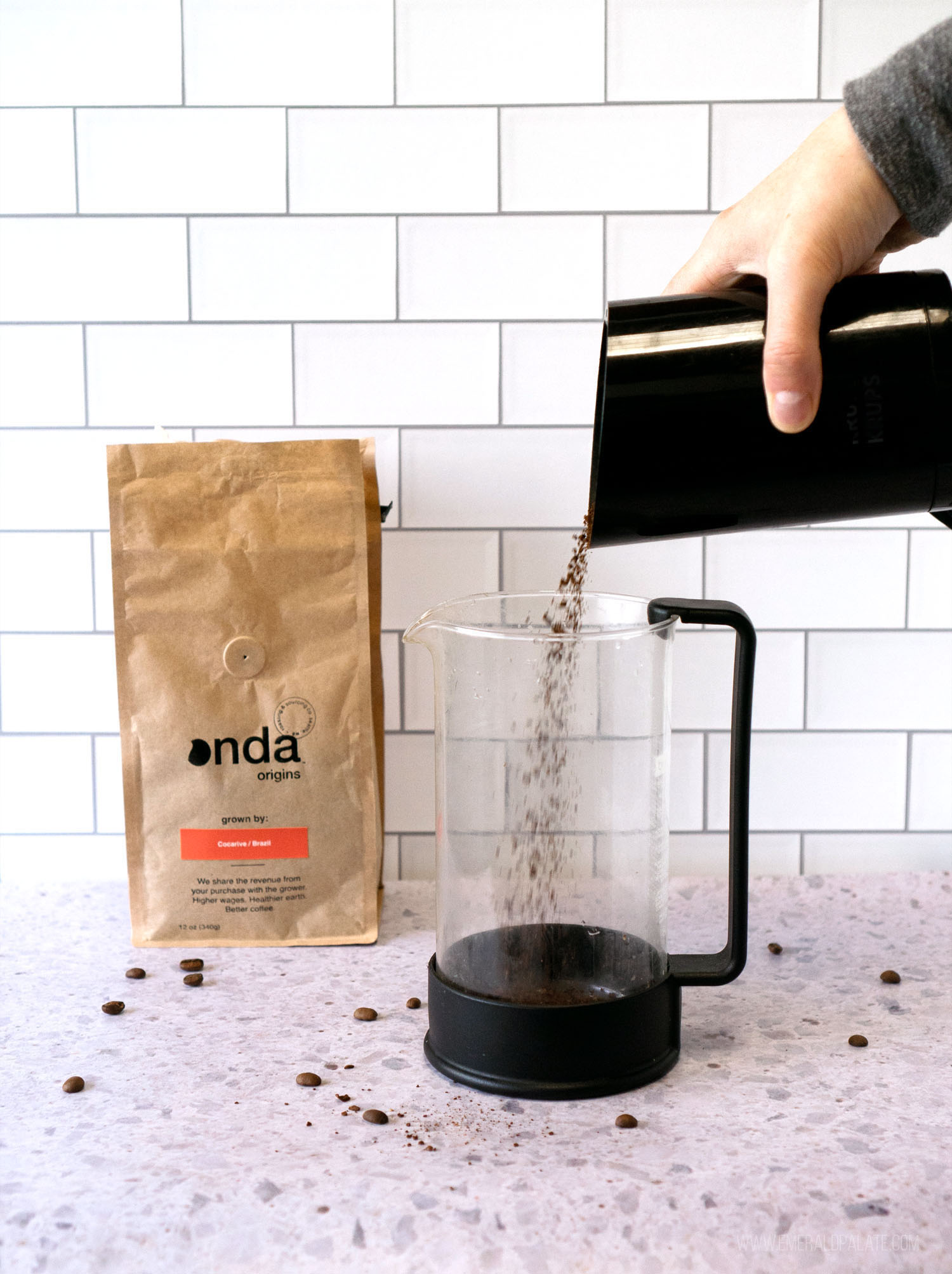
Add grounds to the French press
Put your grounds in the bottom of your warm French press.
Create a bloom with hot water
When your kettle whistles to let you know the water is boiling at 212℉, take it off the stove element. Let it sit for about 15 seconds to bring the temperature down to the ideal ~200℉ range.
When ready, slowly pour the hot water into the French press in a slow circular motion until all the grounds are just wet. You’ll also notice the coffee start to puff up like a muffin top. This is a bloom, which appears when carbon dioxide rushes to the surface.
You want to get the grounds just wet enough, but not so wet you see water underneath the bloom. The idea is to trap just enough air and water under the muffin-like dome so it doesn’t break. When you reach this point, stop pouring water into the French press.
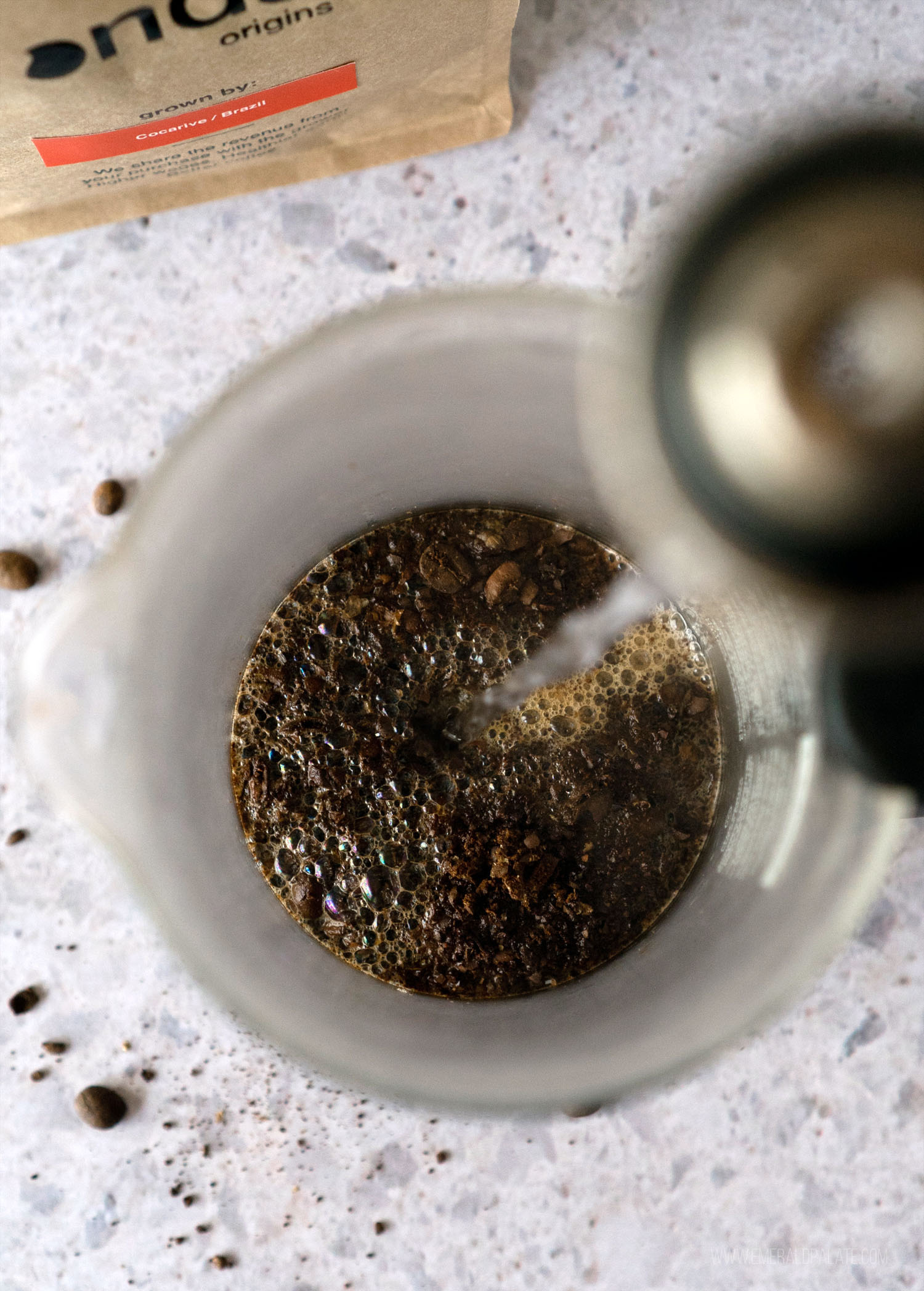
Steep for 30 seconds, then break the bloom
Steep just the coffee bloom for about 30 seconds. You may need to bring the water in your kettle back up to a boil while you wait so that when you add the rest it’s the correct temperature.
After 30 seconds, break that bloom by swirling the French press. If you smell it at this point, you’ll notice the notes of the coffee. In fact, Tupper said this is the best part of the French press brew method!
Fill the rest of the French press with water and steep for 3-4 more minutes
Add the remaining ~200℉ water and put the French press lid on with the plunger up. You should see the coffee start to settle to the bottom.
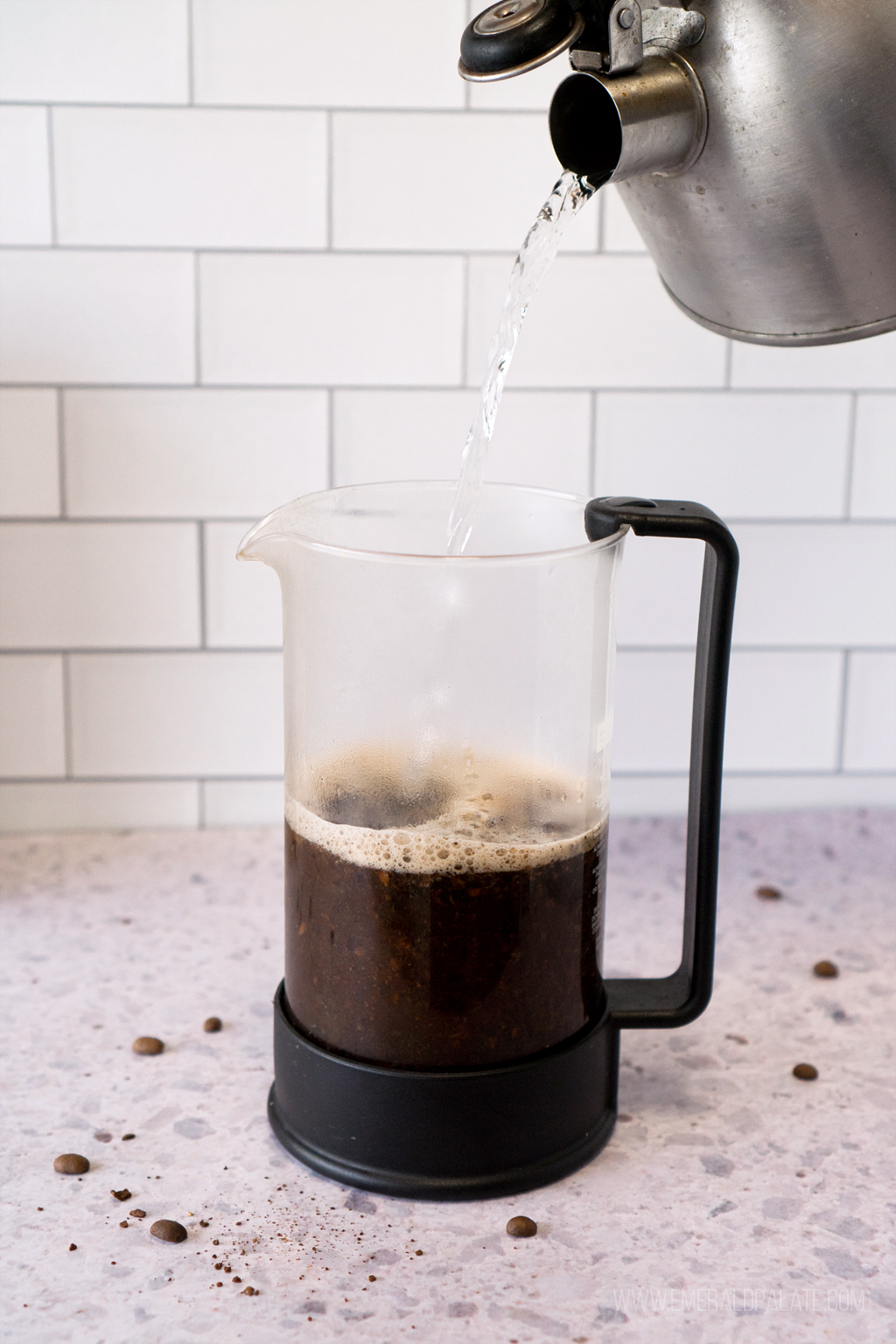
Gently stir the crust at top
After 3-4 minutes of steeping, you’ll notice there’s still a crust of grounds at the top. Stir this top portion gently to help more grinds settle to the bottom.
If the grounds keep floating at the top, it means there’s too much chaff, which is the papery skin of the coffee bean that’s supposed to flake off during the roasting process. If you see this, you can just skim the floaters out with a spoon at anytime while it’s steeping.
Steep 4-5 more minutes
Finish steeping to let the the remaining grounds settle to the bottom.
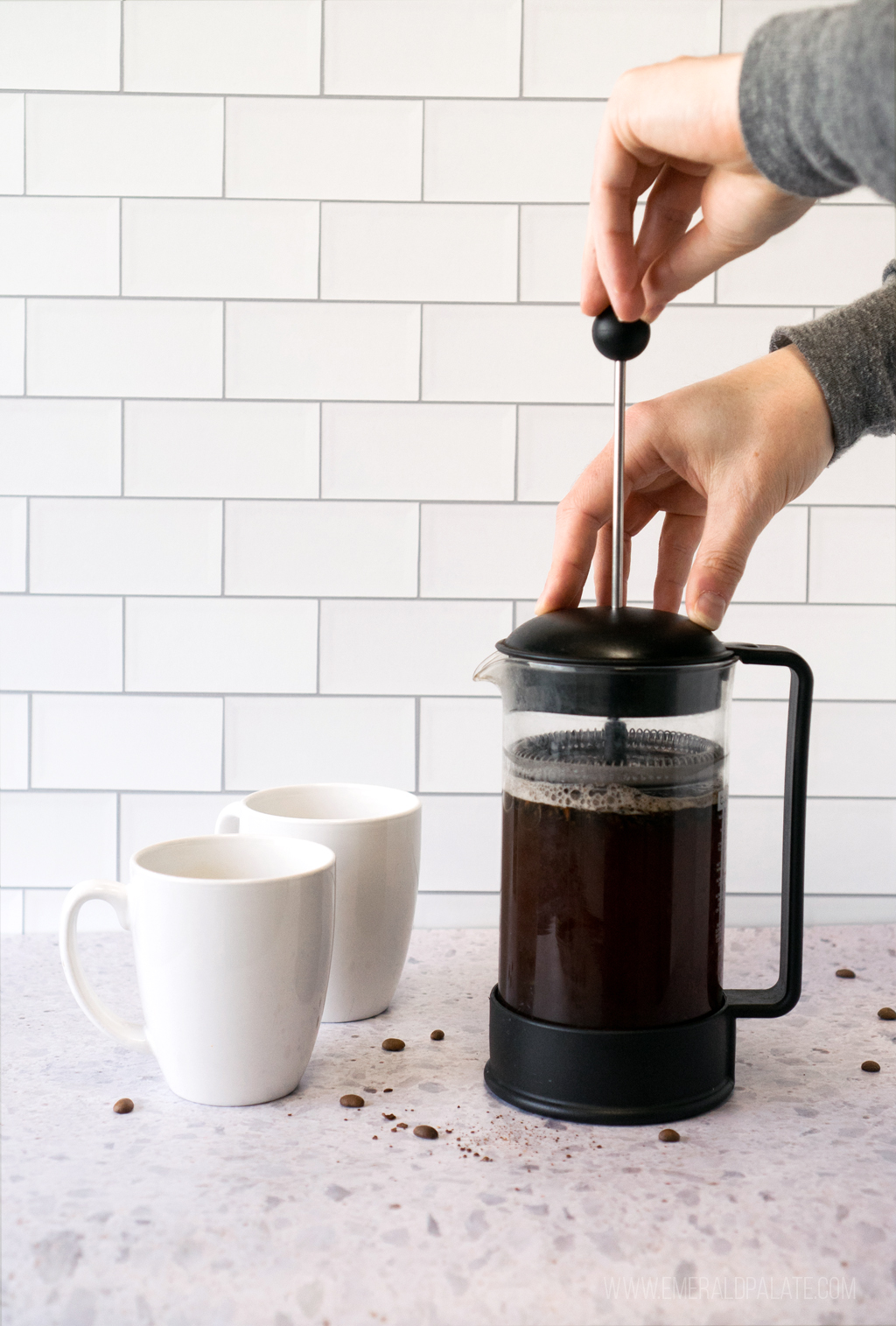
Plunge and serve
After about 9 minutes of steeping total, your coffee is ready to serve!
I usually plunge the lid at this point, pressing the plunger slowly and with even weight. Pro tip from me: I do this with the spout opening pointing toward the sink to catch any coffee that explodes out (yes, that’s happened to me before when I plunged too fast haha).
Tupper actually recommends not plunging the French press, but rather pressing it just enough for the filter to touch the surface of the liquid. This blew my mind, but he explained that this keeps all the grounds and sludge at the bottom of your press and not in your cup. The filter will still catch it as you pour even without the plunge. However, he said either plunging or not plunging works.
When you’re ready to serve, pour the finished coffee into a cup. If you like to drink your coffee with milk or cream, here’s another pro tip from me: add a bit of milk to the bottom of your empty coffee mug. The motion of pouring the coffee from the French press will stir it perfectly so you don’t need to dirty a spoon.
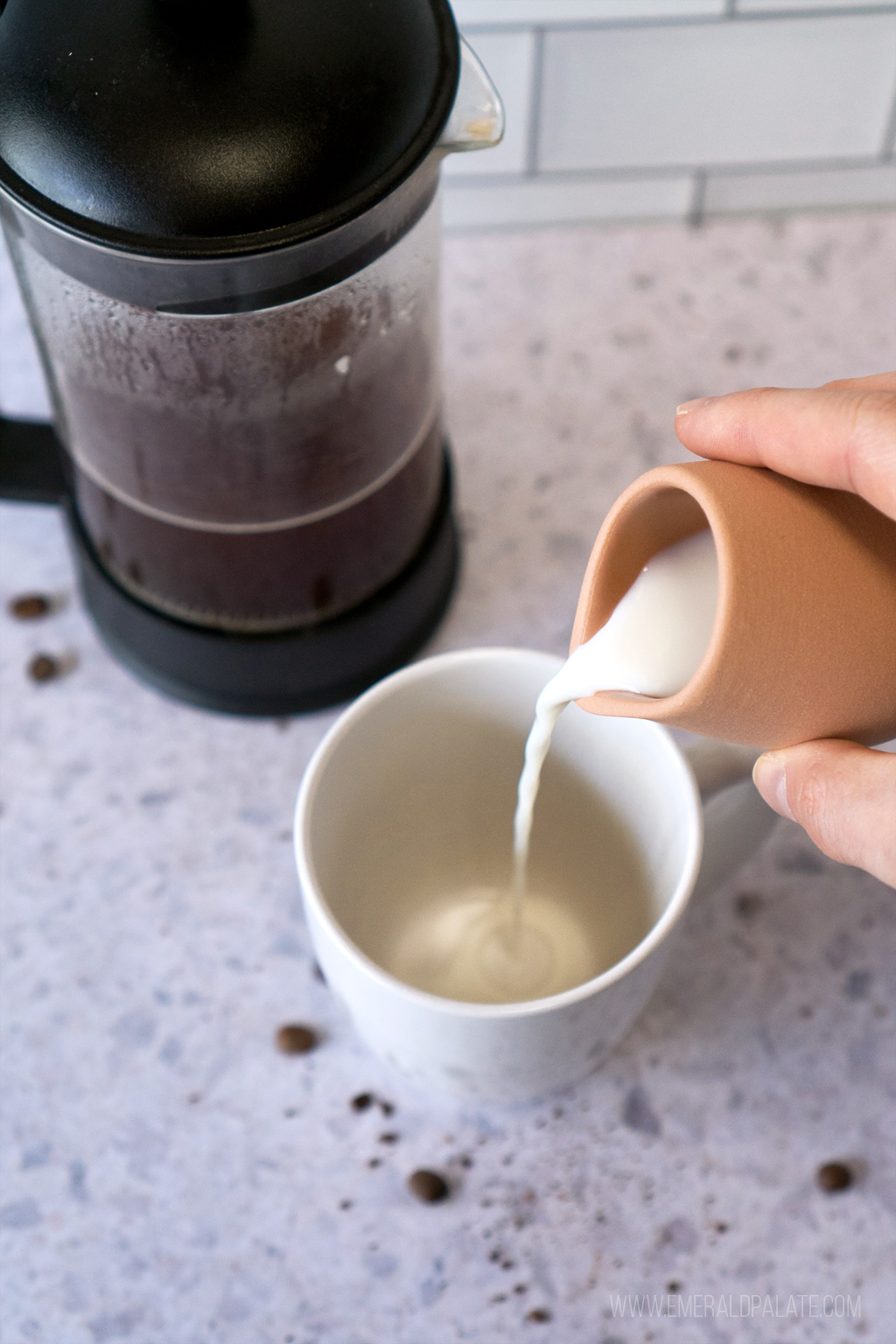
Course correct next time
If you noticed the coffee didn’t come out to your liking, here are some tips for how to improve it next time. If the coffee is too acidic or weak, you under extracted it. Leave it in longer before plunging next time.
If the coffee is bitter, you over extracted it. This also means one of three things happened:
- The grounds were too fine instead of coarse
- You added too hot of water and scorched the beans
- You left it steeping for too long
Change these factors in that order next time to improve your brew.
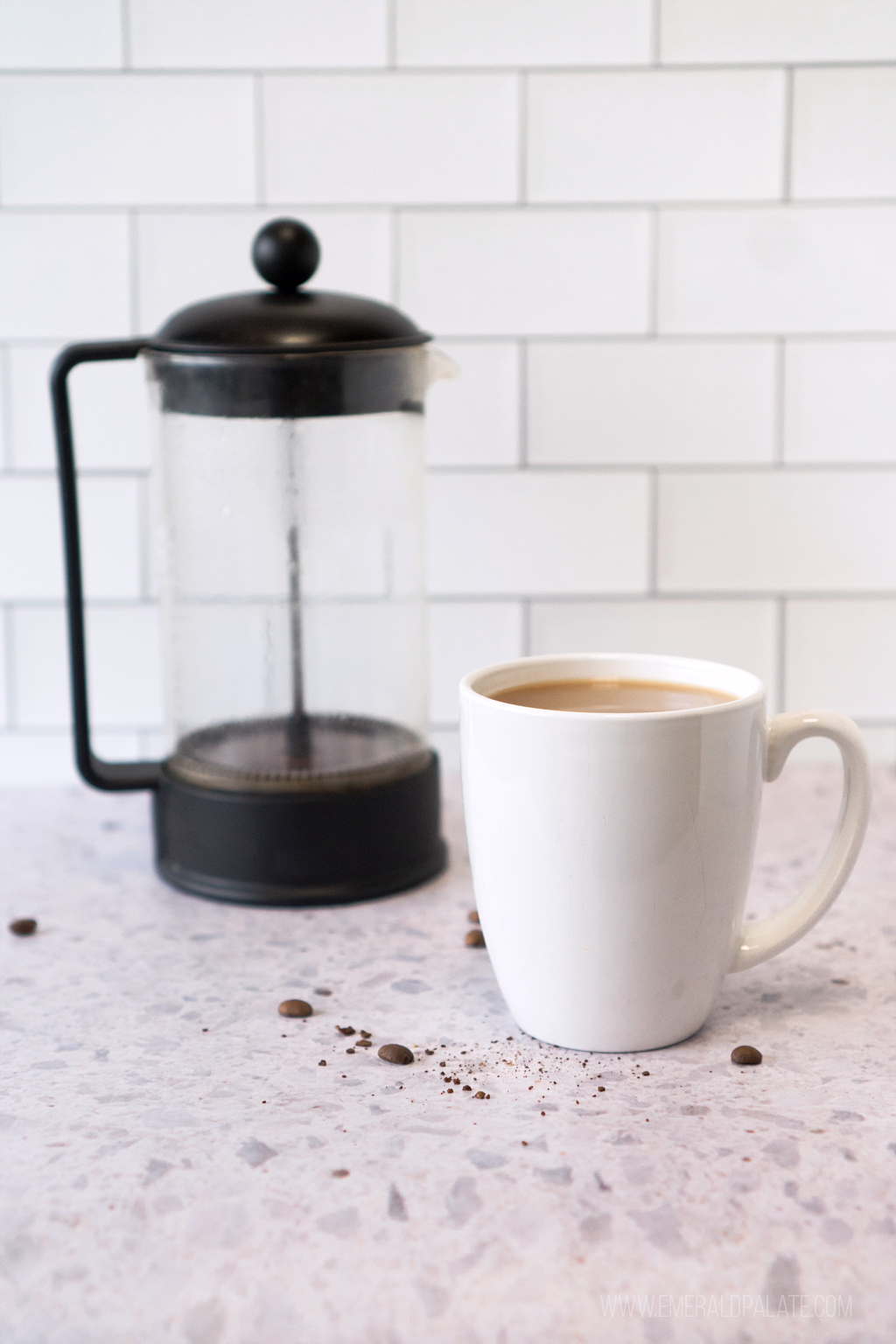
Best coffee for a French press in summary
Hopefully this guide helped you not only find the best coffee for French press, but also understand why. If you remember nothing else, remember:
- Whole beans are better than pre-ground coffee for French press.
- Which coffee beans are best for French press depend on your taste preferences, but in general you want to find Arabica-style beans you can trace back to a farm and that were roasted within the past week.
- Beans with flavor profiles described as nutty or chocolate tend to be best for French press, especially if you add milk or cream to your coffee.
- Light roast or medium roast is best if you don’t like super strong or intense coffee, since French presses create a more bold cup.
- If in doubt, lean into the knowledge of your local baristas.
- If you don’t want to make decisions, try one of these coffee beans from Onda Origins in Seattle, a city that knows it’s coffee!
- Cocarive – A lighter medium roast with beans from Brazil. It has a slightly nutty flavor and is super drinkable.
- Ivonne Herrera – A medium roast with single-origin beans from Guatemala. It has milk chocolate notes and a bit of fruitiness similar to a holiday candy with some fruit liqueur in it.
- Neo Noir – A darker medium roast. It’s smoky and bold with a strong nutty flavor, but is still sweet.
